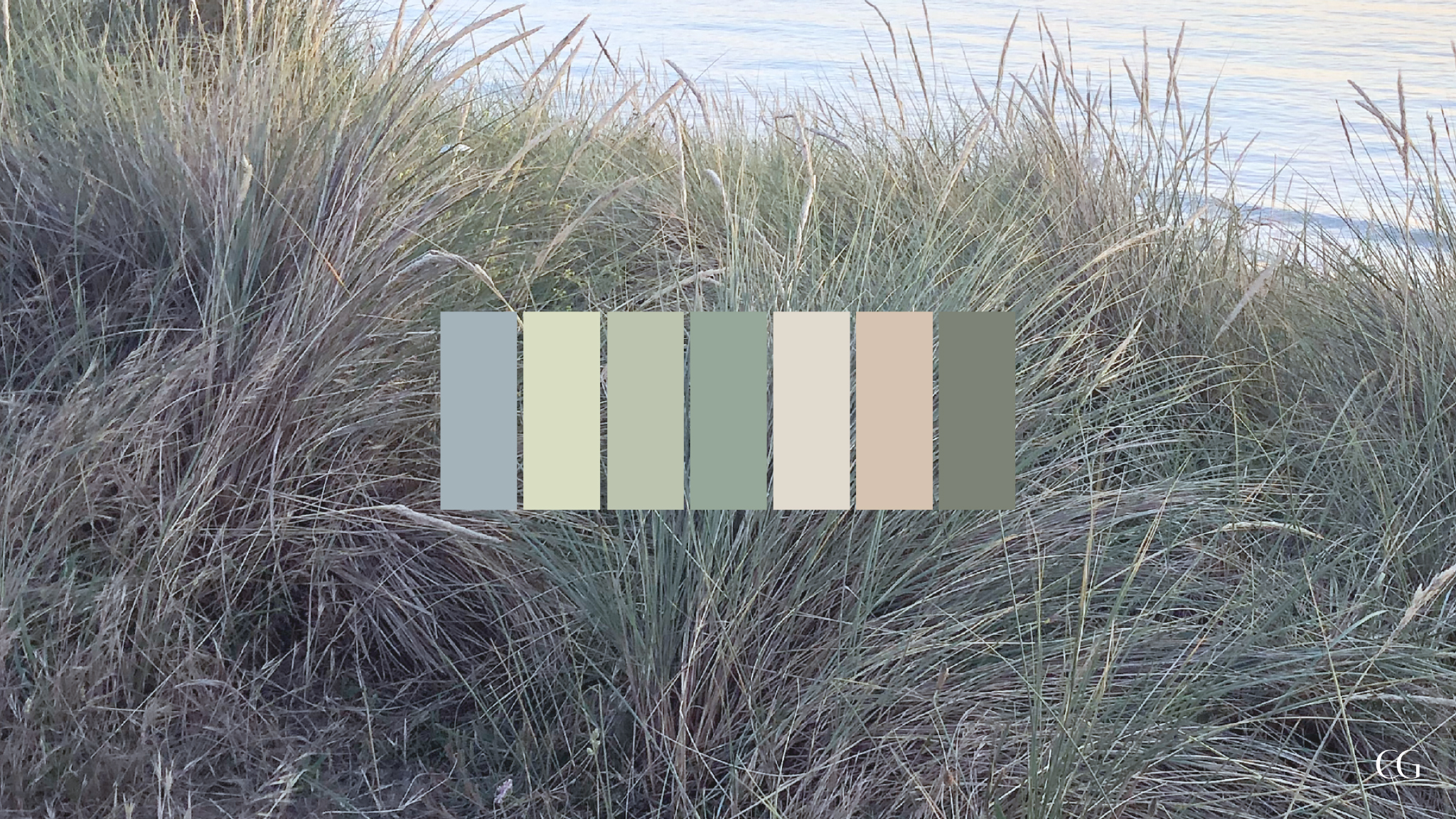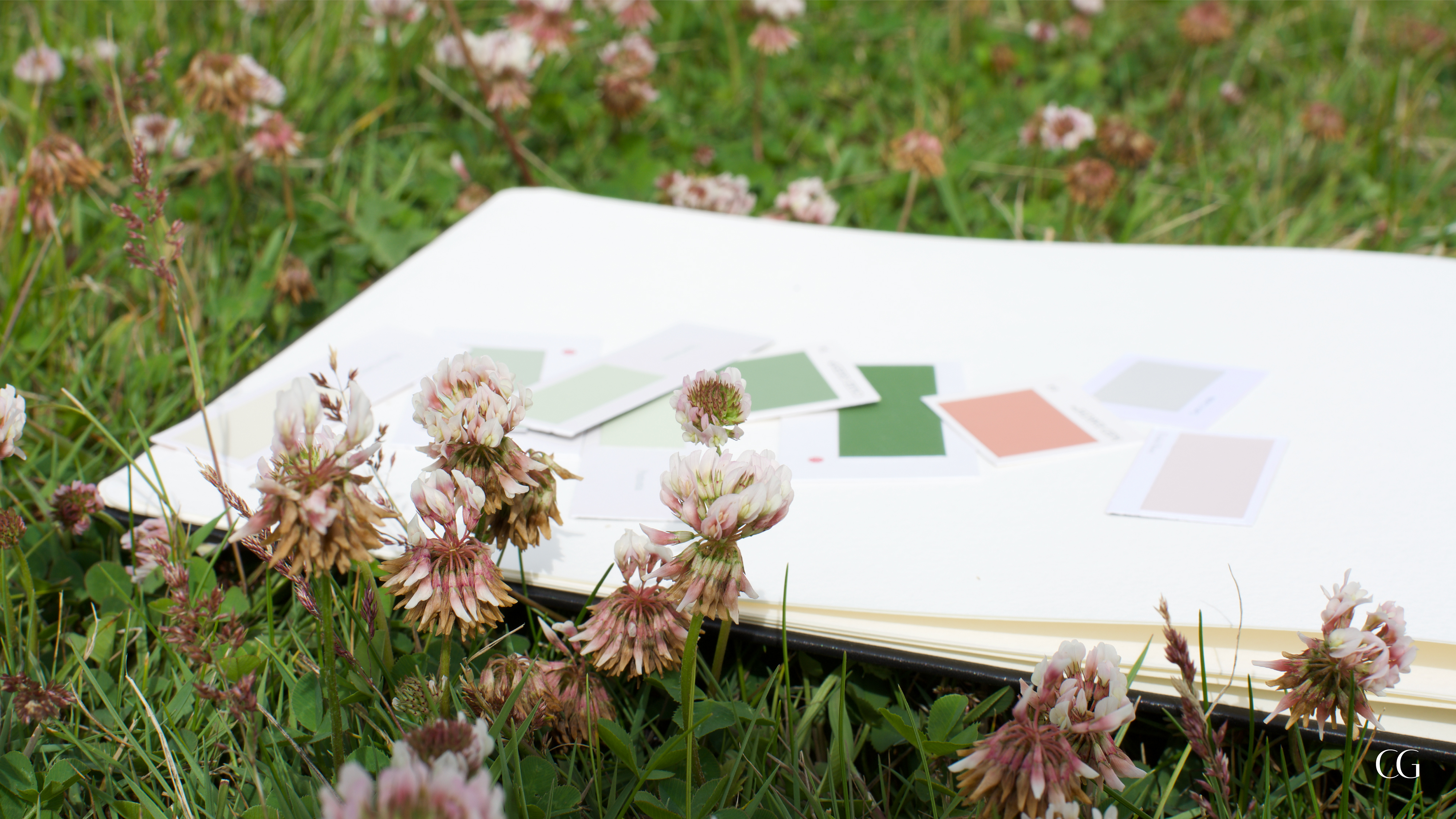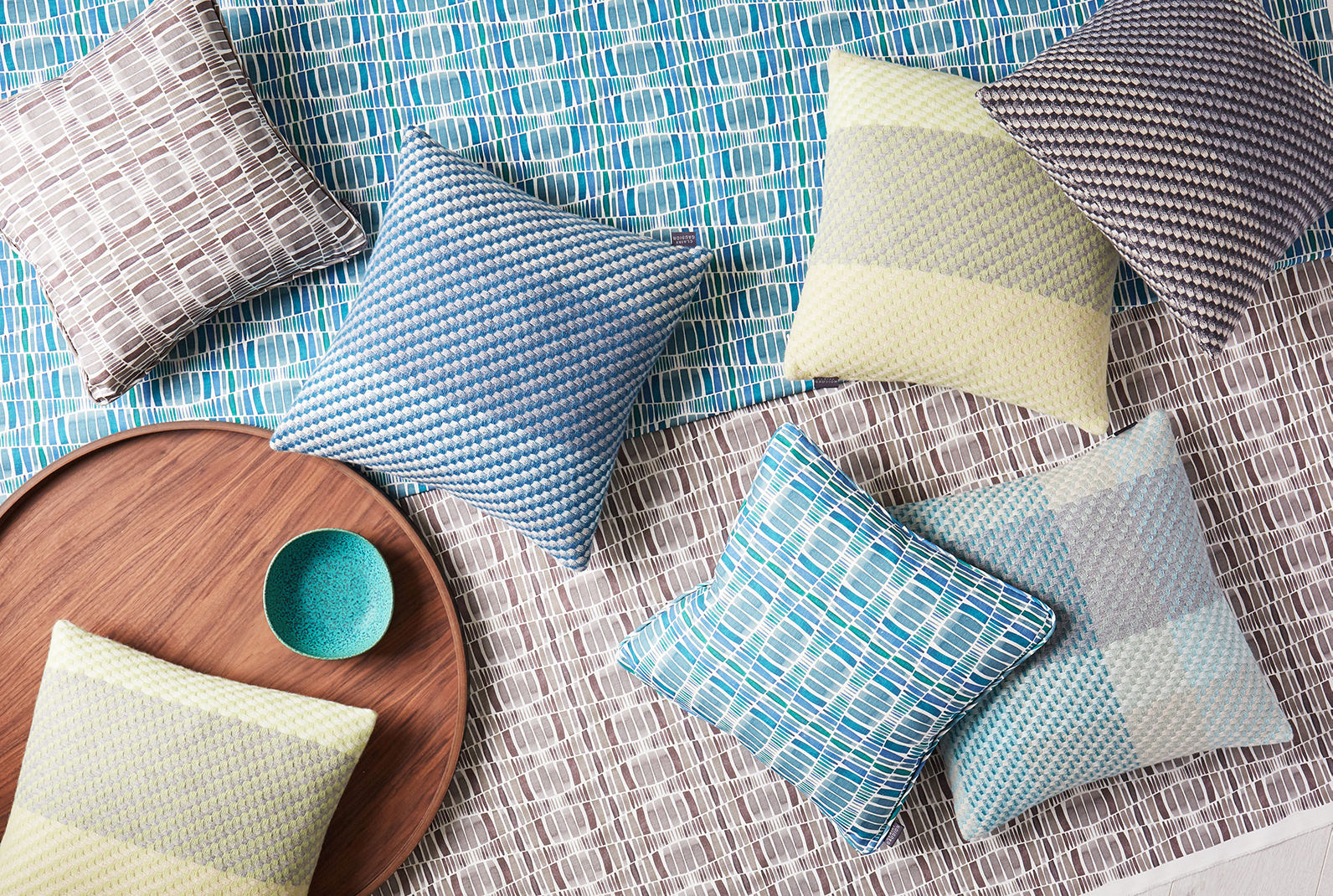inspiration2020/08/05
What is Biophilic Design? And How Important is Colour in Our Homes?
by Claire Gaudion
What is wellbeing?
Before we dive into Biophilic Design and colour, let’s first take a moment to think about 'wellbeing' and what this actually means.
“Emotional wellbeing can be defined as experiencing frequent positive emotions, moods and ability to pursue self-defined goals.” Bonnie Casamassima
Furthermore, a positive and healthy state of emotional wellbeing can also infer a better quality of life and increased happiness.
The reason for considering the meaning of wellbeing here, is that interior design research has shown that we can support and enhance our wellbeing through the way we design our homes. By taking inspiration from nature, from direct natural references as well as from it’s colours, patterns and textures, we can look after our wellbeing and happiness at home.
What is it and Why use Biophilic Design?
Do you feel the benefit of a walk in the park, strolling along a beach, or sitting by a river and watching the water flow past? Do you want to bring these beneficial feelings into your home? This is what underpins all Biophilic design principles.
Biophilia is all about our relationship with nature and how we connect with it. There is something about the human-nature connection which makes us feel good and can be extremely beneficial to our wellbeing. So Biophilic design looks for ways in which we can harness nature and bring this feel-good feeling into our homes.
Biophilia has become quite a hot topic recently. This may be because many of us are becoming quite disconnected from the natural world with our busy, indoor, often stressful, city lives. And, in reaction to this we’re talking more about how we can reconnect with nature and how we can bring nature’s positive effects back into our everyday lives.
There are many ways in which we can adopt Biophilic design in our homes. We can bring plants and greenery indoors, we can maximise natural light and arrange the room to benefit more from natural light and views out onto nature, where possible. We can open the windows and let plenty of the fresh air in. Some of these are easier for us to achieve than others depending on where we live. We can also introduce patterns that mimic nature, add natural materials and textures and nature’s colours.
Interior spaces which have been designed according to Biophilic Design principles bringing references to nature indoors, have been shown to:
- Be more relaxed, calming & restorative
- Reduce stress and anxiety
- Lower blood pressure
- Increase productivity
- Encourage positive emotions and mood
- Increase creativity
- Improve concentration
- Improve recuperation
How Important is Colour in our Homes?
Colour is just one way that nature can be referenced indoors, but is an incredibly powerful one that can change the mood and feelings we experience in our homes. Colour can bring reminders of nature indoors, re-connecting us with the outdoors to boost our wellbeing.
Knowing how to use colour can mystify some people, but nature presents us with an amazing design resource and shows us how to put colours together to create beautiful harmonious colour schemes. This is what we explore on our new online colour course – Biophilic Colour in Interiors: what nature can teach us about colour.
Claire Gaudion textiles and home accessories are all inspired by nature’s colour palettes. Blues and cyans that are reminiscent of picturesque skies and the sea. Shades of green that are associated with healthy plants and thriving natural landscapes. Plus, an array of neutrals mixed with more colourful hues. Home accessories are a great way to bring brighter colours into a room as accents, just as we see with nature’s flowers and fruits. Too much of these bright, saturated colours can be over-stimulating for our homes if the ratio isn’t right, so keeping the balance as we see it in nature is a good guide.
There is a high degree of individuality associated with colour preference and the key is tuning into which colours resonate with you and create the feeling you want in a room. Your home should be a story of you, and a space to support and nurture you.
When you are next out for a walk in the park, take notice of the nuances of colours around you. Does every blue or green create the same emotional response for you? Different shades of a colour can create very different emotional responses, from calming and relaxing, to refreshing and uplifting, or energizing and invigorating. Our emotional response to colour is driven not only by the colours themselves, but also by the chroma – how saturated, or muted, the colour is.
Tune in to the colours around you to discover the best harmonious palettes for your emotional wellbeing. Or join us on our online course to discover more!
References / Further reading:
Bill Browning, 2015, HUMAN SPACES: The Global Impact of Biophilic Design in the Workplace.
Bonnie Casamassima, 2020, Can Biophilic Design Improve Emotional Wellbeing, Interface.
Terrapin Bright Green, 2014, 14 Patterns of Biophilic Design– improving health & well-being in the built environment.
Shop the article
Read more
INSPIRATION
Mabes Makes: Easy Cheese Scones
A mouth watering, easy cheese scone recipe. Perfect served warm with butter....
INSPIRATION
How To Bring A Feeling Of Overseas Warmth Into Your Home
As an expat child, I bounced from country to country, picking up interior...
INSPIRATION
Jemima Sara x Terry de Havilland: Summer of Self-Love
British designer, artist and member of our Wolf & Badger...
INSPIRATION
How To Pack For Your Weekend Escape With Lucrezia Worthington
Lucrezia Worthington is a freelance travel journalist, social media manager...
INSPIRATION
Sustainable Style Tips: Summer Edition With Cassandra Dittmer
I have been hearing a lot of whispers of the roaring 20’s post-pandemic...


